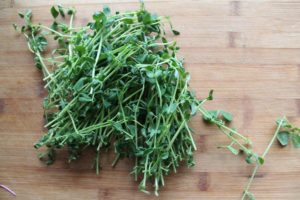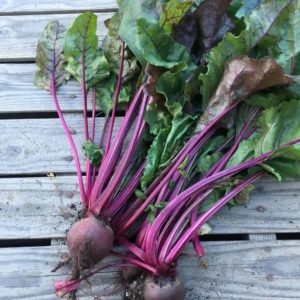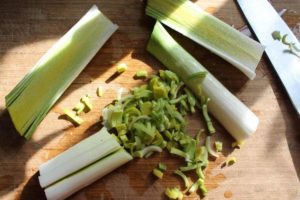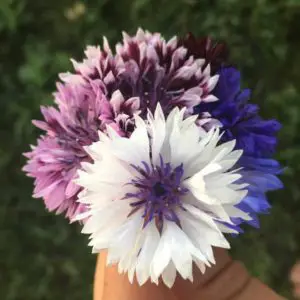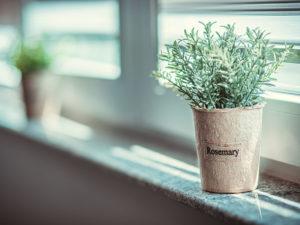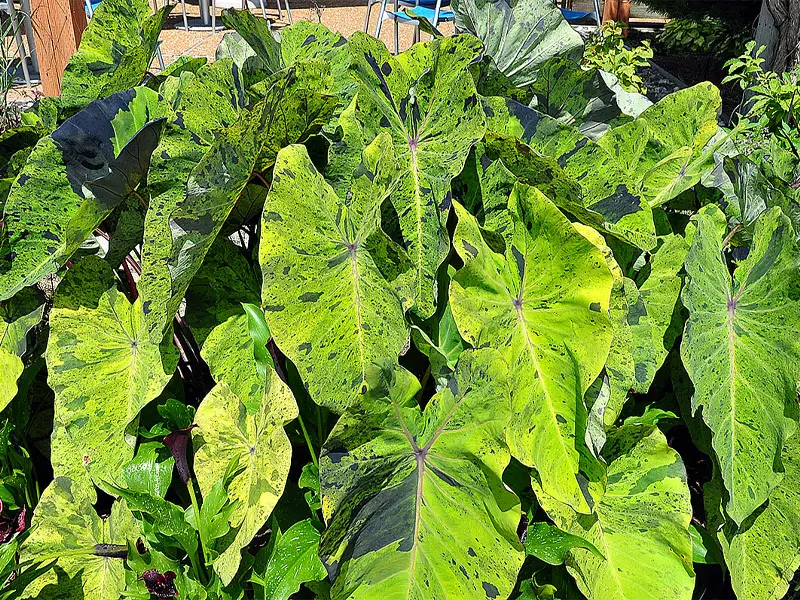
Colocasia ‘Mojito’ is also known as taro or elephant’s ear.
It was discovered during the 17th century when colocasia was brought from Africa to the Americas.
This was sold as food for the slaves by the Spanish, Portuguese, and British.
The ‘Mojito’ is a branch mutation of Colocasia esculenta ‘Midnight.’
It is known for signature large, dramatic, arrow-shaped leaves.
A tall and upright plant.
The large, ovate, variegated leaves often have black to very dark purple irregular markings.
The stems are light green, streaked with dark purple that fades to pink.
The ‘Mojito’ grows between four to five ft. tall and wide.
It can be grown as a marginal plant in ponds, pots, or beds in evenly moist soil.
You may notice some yellowish-white spathes and spadixes during the summer, but the foliage usually hides them.
It can also be planted indoors as a houseplant in the winter.
| Scientific Name | Colocasia Mojito |
| Common Names | Taro, Elephant’s ears |
| Hardiness | 8 to 10 |
| Indoor or Outdoor Plant? | Outdoor |
| Sun Exposure | Full sun, Partial sun |
| Water | Average, high |
| Size | 4’5”in height and width |
| Soil Type | clay, loam, sand |
| Soil pH | acidic , neutral |
| Flower | rarely flowers |
| Growing Difficulty Level | medium |
Colocasia Mojito Appearance and Characteristics
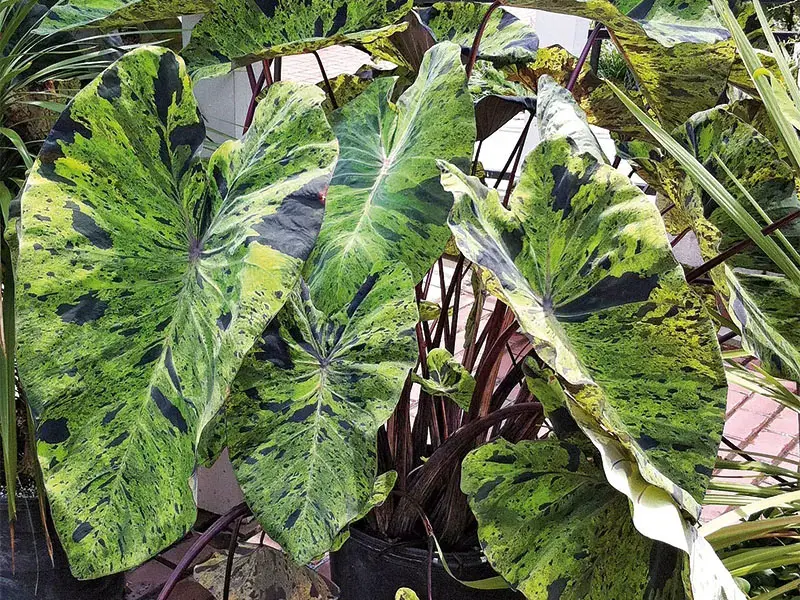
The Colocasia Mojito’s striking features are its leaves and the fact that it has evolved into a significant source of food production.
The name elephant’s ears suit this plant because the leaves are broad, growing almost two to three feet wide.
This makes it one of the largest in the plant kingdom.
While the deep green forms the background for the leaves, the dark flecks of black and purple give it a particularly striking appearance.
The stems are essentially green in color and are spotted with flecks of purple, which gradually fade to pink.
No two speckled patterns are alike.
The splotches and streaks can vary from leaf to leaf, so no two plants ever really look the same.
Many gardeners and homeowners prefer the ‘Mojito’ because they transform the way the garden looks.
Colocasia Mojito Growing Guide
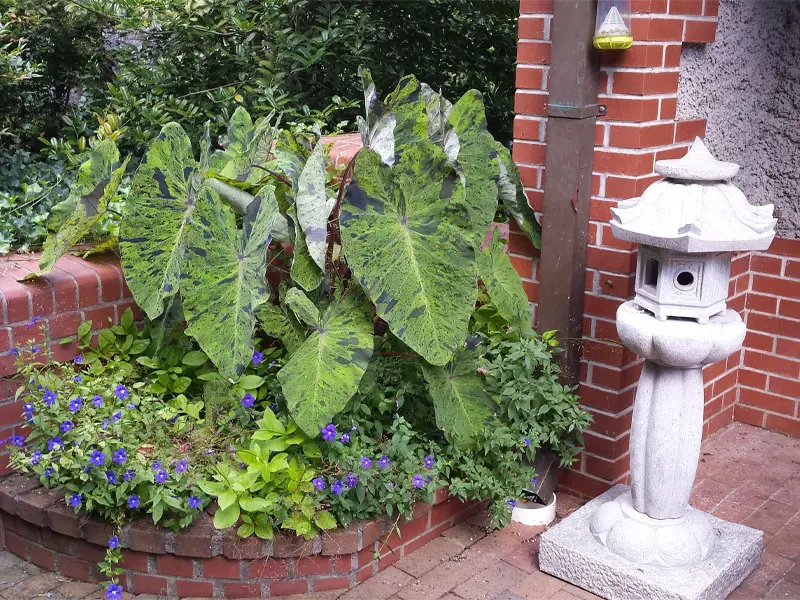
The colocasia mojito requires great care for growing.
They are tropical plants, so they cannot tolerate any frost and only emerge when the soil is warm.
Bulbs are usually planted in organic soil when gardeners want new plants.
Controlling the weeds around the plant is vital as the weeds are likely to remove the water and nutrients in the soil.
Since these plants are grown from rooted plants, bulbs, or corms, they need to be grown under very specific conditions.
Water
The Colocasia is different from its famous counterpart, Alocasia, in that it needs slightly more water.
You could easily over-water this plant, especially if it is placed in a dark environment.
Periods of drought can result in the specimen falling back into a dormant state, resulting in stunted growth.
So when watering, allow the top third to dry out in between watering. Reduce this further in autumn and winter.
If you under-water, then it will cause the plant to have stunted growth, brown leaf edges, and yellowing leaves.
This is also found in pot-bound plants or in ones getting too much sunlight or heat.
Over-watering can cause a collapsed base, yellowing of older leaves, moldy soil, and plant death.
To resolve this, you could remove the affected leaves, roots, and soil and replace them with a fresh batch of houseplant compost.
Light
The colocasia mojito needs to be placed in a bright location with minimal, indirect sunlight.
If the site is too bright, it will cause bleached leaves and sun-scorch.
If it’s too shady, then it will result in soil mold and root rot.
You could use overhead lighting to prevent the growth structure from toppling over, which occurs when it is placed far from a light source.
During autumn to late winter, when the rays are at their weakest, the Colocasia can be trained to tolerate harsher levels of sunlight.
Gardeners can do this by gently increasing the number of hours in the sun over the oncoming month.
Try to increase the amount of light by an hour every week.
Four hours of sunlight is the maximum amount that the plant can handle.
Soil
This plant needs mold-free and fertile soil.
You must prepare the bed by turning the soil under to a depth of eight inches, and be sure to dig out any grass or stones.
You could consider adding a ‘Houseplant’ labeled feed.
This should be done every four watering sessions in the spring and summer, as it enhances the richness of the soil.
This should be reduced to every six or seven times you water the plant in the colder months.
If you follow a fertilization regime, try adding a 50 percent diluted feed measuring 20-10-10 every two weeks to boost the plant’s growth.
Fertilization can be discontinued during the winter months to allow the Colocasia to rest.
Watering should also be reduced during the cool seasons so that the soil dries out slightly.
You could use compost or organic mulch measuring 1-2 inches to enhance the quality of the soil and the plant.
The mulch helps retain soil moisture and maintain soil temperature.
Temperature and Humidity
Since this is a tropical plant, it loves warmth and humidity.
If you place it in bright, indirect light from an east-facing window, it will thrive and grow healthy and strong.
This high humidity plant flourishes better if you use a humidifier in the room if you keep it inside.
Elevate them slightly with a layer of rocks or pebbles between the pot and the saucer to increase humidity level, as this also prevents root rot from excessive water.
The ideal growing temperature should be between 10° – 30°C (50° – 86°F).
It can be grown outdoors during the summer in a sheltered location with temperatures above 12℃ (54℉).
Keep it away from direct sunlight to prevent sun-scorch and dehydration.
If you have space in your garage or basement, you can store pots with tubers in temperatures between 45 and 55 degrees Farenheight.
Creating a humidity tray while the heaters are operating also provides a moist and stable environment.
Potting and Repotting
Colocasia should be grown in fairly large containers when grown inside, as they can get quite big.
The Elephant’s Ears is planted in the spring season once the dangers of the frost have passed.
When planting them indoors, you could start earlier and should begin four to six weeks earlier than the last frost date.
Make sure to plant the tubers five inches deep in large containers so that there is some distance between them.
The pointy side of the tuber should be facing up.
Cover with coil and press down to form a little well and then add water.
Adding mulch will help retain soil moisture.
Repotting should be done every three years in the spring.
Organic compost and a large pot with adequate drainage are ideal for its growth.
Gardeners should hydrate the plant for 24 hours before they tinker with the roots to prevent the risk of transplant shock.
If you have less light in your area, add a thin layer of small grit in the pot’s base to improve drainage and reduce over-watering.
Propagating and Pruning
This plant can be propagated by seed, corms, or basal offset division.
When planting, corms use a pot twice as big in width and three times the depth so that its roots have sufficient room to grow.
Take a well-draining potting mix and fill the bottom half of the pot.
Place the corm, fill with compost, irrigate thoroughly and place in a bright location with indirect sunlight.
The plant produces several basal offsets that should be separated once they have a good root system.
Hold it near the nodal, push the chosen offset downwards, separate the foliage and root system away from the mother plant, and transplant it in a large pot.
Maintain the moisture, place it in a bright location.
Use clean utensils or shears for pruning as this reduces the chance of bacterial and fungal diseases.
Don’t cut through yellowed tissue and make clean incisions to prevent shock.
Advantages of Growing Colocasia Mojitos
This plant is considered an impressive ornamental specimen.
Colocasia mojito can easily thrive in USDA zones 8 through 11.
Since it is a swamp plant, it develops a hardy root system under the water.
Its hardiness makes it a great landscaping plant in, around, or near water features.
It is considered an annual plant in the colder northern parts, where the bulbs or tubers of the plant are dug up and stored through the winter and then replanted in the spring.
You can cultivate this quickly in soils amended with organic matter.
A compost consisting of a good balance of nutrients and an ideal pH level can be added to the soil, making it completely organic.
Another option is to top dress the soil after planting with 1-2 inches of organic mulch that breaks down into compost.
This makes the tubers completely fertilizer-free and organic, ready to consume.
You could also save a lot of water by using a drip or trickle system that delivers water at low pressure at the soil level.
In case you use overhead sprinklers, ensure that you water the plant early in the day.
This gives the foliage time to dry off before evening, minimizing disease problems.
Colocasia Mojito Pests, Diseases, and Problems
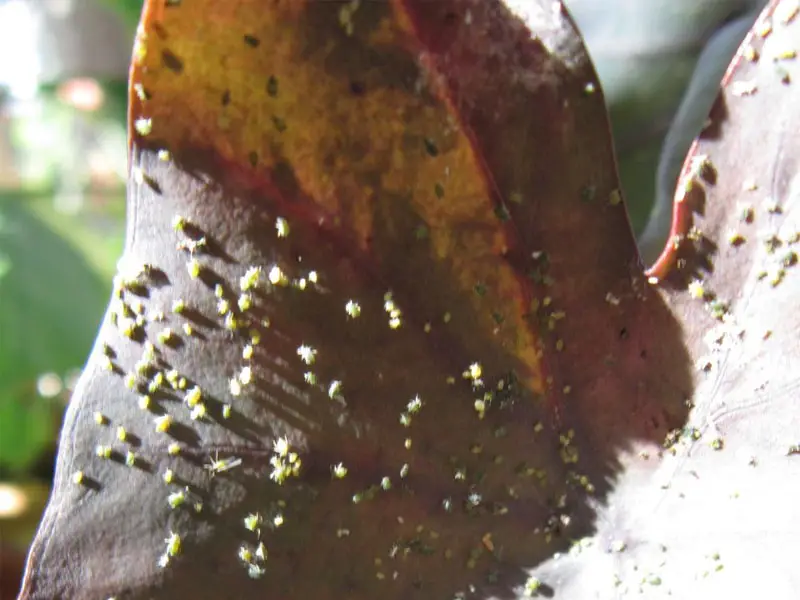
This Colocasia mojito attracts a few pests like spider mites that’ll form webs on the under-leaves of the plant and Aphids that attack young plants.
Gently rinse the foliage every month to increase the light-capturing efficiency.
Insufficient water and over-exposure to the sun can cause curled leaves and brown leaf edges.
To a certain extent, direct sunlight in winter and complete avoidance of direct light in summers can prevent this. Using chemicals may cause yellowed, mottled spots.
The leaves should be cleaned of dust regularly as they can clog up the plant’s pores, causing lowered light-capturing efficiency.
A good rinse from the topsides of the leaves downwards once a month will improve growing conditions.
Colocasia Mojito Seeds
Looking for high-quality seeds? Take a look at the following links and see which ones are right for you:
3 Live colocasia esculenta Elephant
.

10 Colocasia Esculenta Elephant Ear Taro Poi Gabi Kalo Eddo Bulbs

20 Live Elephant Ear Colocasia Esculenta Taro Bulbs

FAQs
Here are some frequently asked questions about the Colocasia Mojito. Enjoy!
Do the Colocasia Mojito produce flowers?
Yes, they are often hidden by the colorful foliage or removed by gardeners to retain plant strength.
Does the Colocasia Mojito lose its leaves?
Yes. It is a regular phenomenon for it to drop old leaves and produce new ones.
How long does it take for Colocasia Mojito to emerge?
Usually between four to six weeks, but they can emerge late because the soil must be thoroughly warm.


